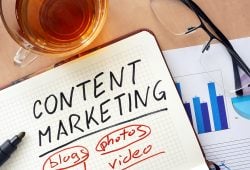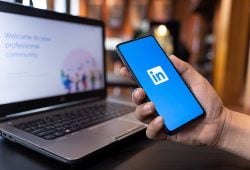
This week’s earlier release of the most recent version of OpenAI’s large language model, GPT-4, has generated a media frenzy. It might feel difficult to separate fact from fiction in the middle of such information overload.
This article highlights some important GPT-4 marketing considerations.
The popular ChatGPT chatbot, which is powered by the San Francisco-based tech business OpenAI, has a new version, called GPT-4, of its large language model (LLM). The release of ChatGPT in November 2022 was welcomed with a great deal of media excitement, which is not surprising considering the flood of coverage that has praised and in some cases criticized its capabilities.
What sets GPT-4 from its predecessors?
What distinguishes GPT-4 from GPT-3.5, its predecessor? How might it affect marketers’ daily activities?
The following are some crucial details concerning the new technology and its ramifications that marketers should be aware of:
ChatGPT+ subscribers can access GPT-4
Those who have paid for ChatGPT+, the chatbot’s premium membership service, can presently access GPT-4. Developers who are interested in using the model’s API can now sign up for a waitlist at OpenAI.
GPT-4 can respond to both text and image queries
unlike the original ChatGPT’s ability to only recognize text inputs. According to New York Times report, if presented with a picture of your fridge containing some foodstuff, the new LLM will easily suggest a recipe and give you clear preparation instructions.
For example, in response to the query “What can I make with these ingredients?” alongside an image of eggs, flour, milk, and what appeared to be a bowl of whipped cream, pancakes, French toast, and quiche were among the potential culinary suggestions listed by the chatbot. The response was followed with some cheery encouragement that “the possibilities are unlimited.”
The GPT-4 is far more knowledgeable than the GPT-3
The GPT-4 is far more knowledgeable than the GPT-3 in a considerably wider range of subjects. For instance, it can think more imaginatively, produce more contextualized and in-depth text responses, and even create simple jokes on its own. It also excels at taking tests. In the Biology Olympiad, an international test in biology for pre-university students, GPT-4 performed in the 99th percentile, while ChatGPT performed in the 31st percentile, according to OpenAI.
High school teachers and university professors who were already concerned about students utilizing ChatGPT to cheat, might have a reason to worry even more once GPT-4 becomes more widely accessible.
Bottomline
Jim Lecinski is an associate professor of marketing at Northwestern University’s Kellogg School of Management and co-author of The AI Marketing Canvas: A Five-Stage Road Map to Integrating Artificial Intelligence in Marketing. According to Lecinski, GPT-4 has now addressed criticism by marketers who shunned away from using AI-powered chatbots because they didn’t frame responses as elegantly or eloquently as a human would.
GPT4 is hardly flawless. Yet it shows how significant advancements are now occurring at an exponentially increasing rate.










